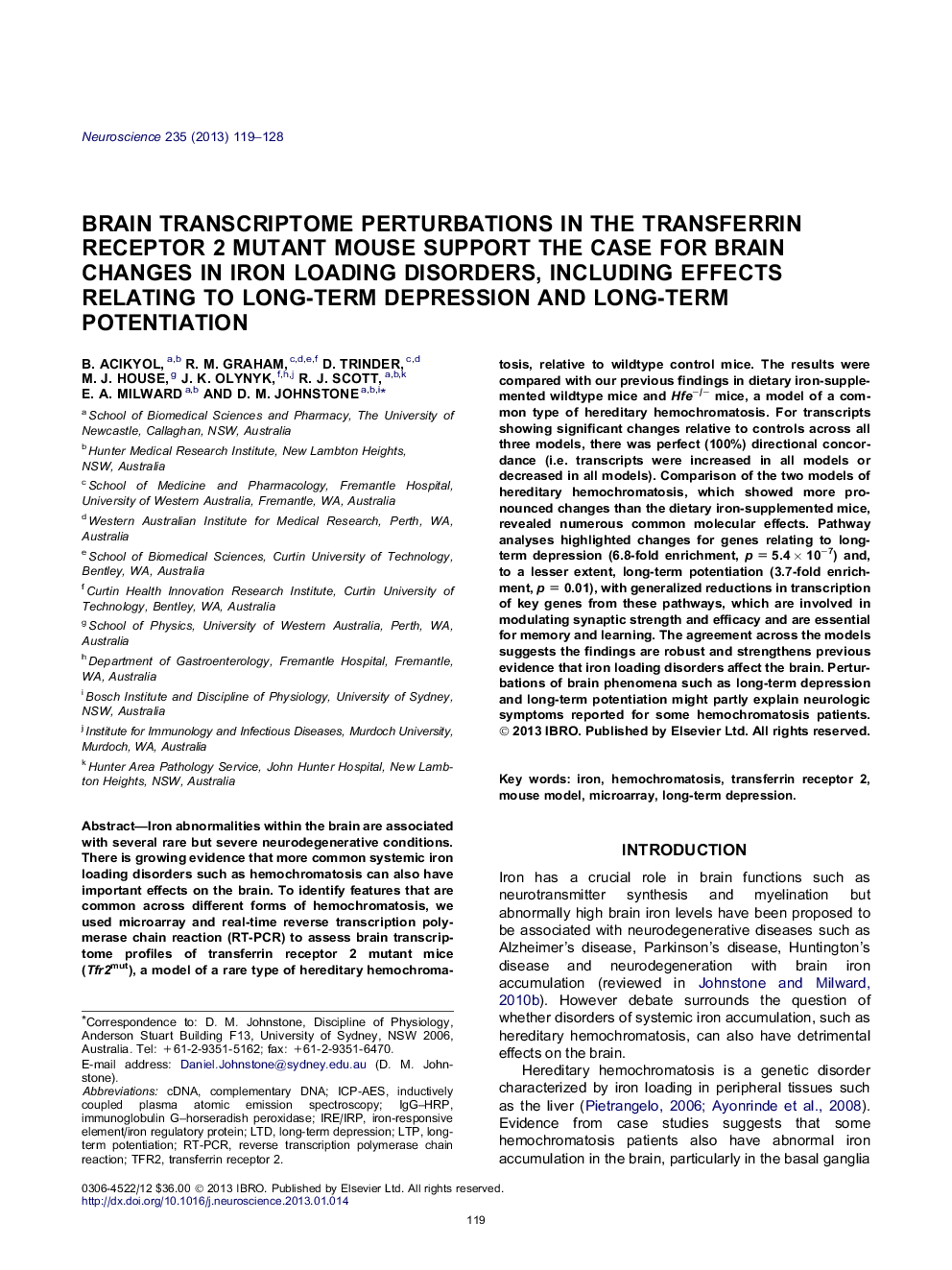| Article ID | Journal | Published Year | Pages | File Type |
|---|---|---|---|---|
| 4338036 | Neuroscience | 2013 | 10 Pages |
Iron abnormalities within the brain are associated with several rare but severe neurodegenerative conditions. There is growing evidence that more common systemic iron loading disorders such as hemochromatosis can also have important effects on the brain. To identify features that are common across different forms of hemochromatosis, we used microarray and real-time reverse transcription polymerase chain reaction (RT-PCR) to assess brain transcriptome profiles of transferrin receptor 2 mutant mice (Tfr2mut), a model of a rare type of hereditary hemochromatosis, relative to wildtype control mice. The results were compared with our previous findings in dietary iron-supplemented wildtype mice and Hfe−/− mice, a model of a common type of hereditary hemochromatosis. For transcripts showing significant changes relative to controls across all three models, there was perfect (100%) directional concordance (i.e. transcripts were increased in all models or decreased in all models). Comparison of the two models of hereditary hemochromatosis, which showed more pronounced changes than the dietary iron-supplemented mice, revealed numerous common molecular effects. Pathway analyses highlighted changes for genes relating to long-term depression (6.8-fold enrichment, p = 5.4 × 10−7) and, to a lesser extent, long-term potentiation (3.7-fold enrichment, p = 0.01), with generalized reductions in transcription of key genes from these pathways, which are involved in modulating synaptic strength and efficacy and are essential for memory and learning. The agreement across the models suggests the findings are robust and strengthens previous evidence that iron loading disorders affect the brain. Perturbations of brain phenomena such as long-term depression and long-term potentiation might partly explain neurologic symptoms reported for some hemochromatosis patients.
► We assess the brain transcriptome of a Tfr2mut mouse model of iron loading. ► Transcript changes highly concordant with two other models of iron loading. ► Reductions in transcripts related to long-term depression and potentiation. ► Findings may help explain neurologic signs and symptoms in hemochromatosis patients.
